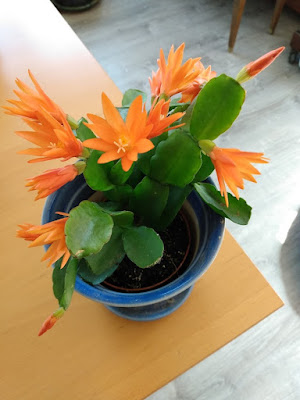‘The Geomancer’s Apprentice’: Qi and the Five Feng Shui Elements
Have you ever stumbled across a reference to “qi” in a book about feng shui? Ever wondered what the five feng shui elements are? These are some pretty cool notions, let me tell you.
They’re perfect for a magic system in an urban fantasy novel.
This is the second in a series of posts in which I discuss the ideas and concepts behind my novel The Geomancer’s Apprentice. The book is—you guessed it!—an urban fantasy adventure that is loosely based on Chinese culture and mythology. It revolves around superheroes known as Dragon warriors who can manipulate qi, the life force that underpins the universe.
(Click here if you want to read the first post, in which I provide a guide to the terms, objects and monsters that appear in the book.)
Junie Soong, my main character, is in her early 20s and stuck in a series of dead-end jobs. Her mother talks Joe Tham, a relative who runs a struggling feng shui business in Washington, D.C.,’s Chinatown, into hiring Junie. She discovers her Dragon powers after she and Joe investigate an eerie incident at a client’s cellar.The five feng shui elements make their appearance in one part of the novel where Joe has to perform a sealing ritual. The ritual requires the involvement of the Five Feng Shui Guardians, also known in Chinese mythology as the Celestial Beasts.
In this post I’ll talk about qi, the feng shui elements, and how the guardians are connected to the elements.
I’ll also explain how the elements feature in today’s feng shui. The ancient art has found new life as a decorating tool to help people live in harmony with, and benefit from, the natural energies of their environment.
Old-School Feng Shui and Qi
In case you didn’t catch the first post, feng shui practitioners or geomancers were hired in ancient China to help find auspicious locations for grave sites, homes, and important and/or spiritual structures. After all, if you’re going to build something, you want it to be in a place where you’ll have good fortune or find everlasting peace.
Qi (pronounced “chee”) is a fundamental concept in feng shui. Qi is the amalgamation of the vital energies that flow within all living things. But it’s not just living things. Even inanimate objects and geographical features possess qi.
Warning: we’re going to get a little metaphysical here. Qi manifests in two polar opposites: yin and yang. In the simplest terms, yin is the material and yang is the immaterial. Qi constantly transforms from one to the other in an eternal and balanced cycle.
So what are the five feng shui elements?
The five elements are Wood, Water, Metal (the Chinese character for the element means “gold”), Fire and Earth. They’re actually basic types of qi. The use of the word “element” to describe them is confusing, but it’s the translation that has become the most popular.
Instead of “elements,” it might be easier to think of the five as qi’s phases of change as it transforms from yin to yang and back again.
There are two main cycles in which the five types of qi interact: the creation cycle and the destruction cycle.In the creation cycle, each element feeds or creates the next one:
- Wood fuels Fire
- Fire burns things, thus helping to form Earth
- Earth creates Metal
- Metal bears Water
- Water feeds Wood in the form of plants and trees
The destruction cycle is where one element destroys or weakens the next:
- Fire melts Metal
- Metal cuts through Wood
- Wood parts the Earth
- Earth absorbs Water
- Water puts out Fire
So we come to the next segment: What are the Five Feng Shui Guardians?
The five elements are associated with certain things—including animals, compass directions and colors—that were believed to reflect the elements' special qualities. The animals below also were viewed as guardians of the cardinal directions associated with the elements.
- Wood is represented by the Azure (or green) Dragon of the East
- Fire is represented by the Vermilion Bird (or Red Phoenix) of the South
- Metal is represented by the White Tiger of the West
- Water is represented by the Black Tortoise of the North
- Earth is represented by the Yellow Dragon of the Center
Please bear in mind that these are very general explanations and descriptions. There is much more to feng shui and the beliefs behind it. And since my book is a fantasy, how things work in it may not necessarily follow traditional feng shui doctrine.
The Five Elements in Decorating
In The Geomancer’s Apprentice, Junie also utilizes feng shui in the modern context, where incorporating an element in a space can help to create a mood or generate beneficial energy.
Remember, however, to keep things in balance. Too much of an element can result in negative emotions. For example, too much of the Fire element can cause aggression or anger.
Wood: Bringing the Wood element into your living and working areas can help you spark growth and creativity. Use blue and green, for these are the colors of foliage and the sky. You can also add plants or natural fabrics, or wood furniture.
Fire: If you want to encourage boldness, enthusiasm or passion, introduce the Fire element in the form of extra lighting, candles or sunlight. The element’s colors are red and purple.
Earth: The Earth element evokes a feeling of order and stability. Use earth tones and square and rectangular shapes in your decorating.
Metal: The Metal element enhances logic and clarity of mind. Bring metallic objects into your space to give the element a boost. Its colors are white, gray, or silver.
Water: The Water element can improve insight and wisdom. Its colors are black and dark tones. Also incorporate water features such as aquariums or fountains, or art depicting water. Reflective surfaces such as mirrors will help as well.








Comments
Post a Comment